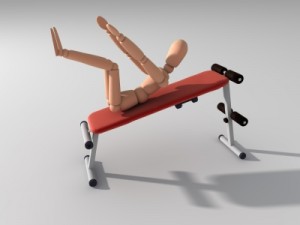Isn’t it interesting the way something new draws your attention. For instance if you get a new red car suddenly you began to notice red cars everywhere! I started writing about developing new routines.
Since I have started thinking about new routines (thanks to Jon Swanson) I am seeing information in the most interesting places. I was scanning Time’s online business section and noticed this Practice Makes Perfect article. I almost overlooked this gem of an article because of the “psychology of money” sub-head.
Basically the author begins by addressing a popular topic, New Year’s Resolutions, head on. This time honored tradition is based on the assumption that a new year brings with it new hope for changing behaviors. This practice is compared to jumping in to the deep end of the willpower pool, a wonderful picture. No wonder the success rate is so low.
Turns out studies show that practicing the skills and thought processes you’ll need before committing to a goal will greatly enhance your odds of succeeding. Here is a quote from the article that captures the essence of the idea using a weight loss example.
In other words, rather than starting to diet immediately—which invariably requires a difficult combination of behavior changes, deprivations, focus and willpower—the Maintenance First dieters tackled all four challenges without the added burden of actually having to lose weight. They got good at the daily business of dieting before they tried to lose weight. That resulted in a greater ability down the line to keep their lost pounds from returning.
For reasons I am trying to understand, some of my behaviors are routine, physical exercise, morning quiet time, while others (like writing, for example) are far from routine. Exercise and quiet times were not always routine. So what made the difference? What makes these sustainable and others seemingly unattainable?
For one thing, sustainable begins with small consistent activities. Quiet time started with 10 minute readings. I remember thinking that 10 minutes felt like an hour, time felt like it stood still. However, once the routine was established 10 minutes didn’t seem like enough because I was getting value from that time, not serving out a sentence.
It’s certainly important to begin with a vision–whether it’s personal growth or physical health, first I need to understand the “Why?” behind the routine. The vision helps me explore the routine’s potential barriers and motivations. I can explore the activities that will be necessary to create the routine.
So here is the tension for me: I need goals and I need to be able to measure progress against those goals; however, I wonder if timing and experimentation without the “burden” of performance might be a helpful routine incubator. What if measurement was a part of the growth process rather than the launch?
Of course there are other factors like priorities, we all have to make choices. I will tackle that notion later.

